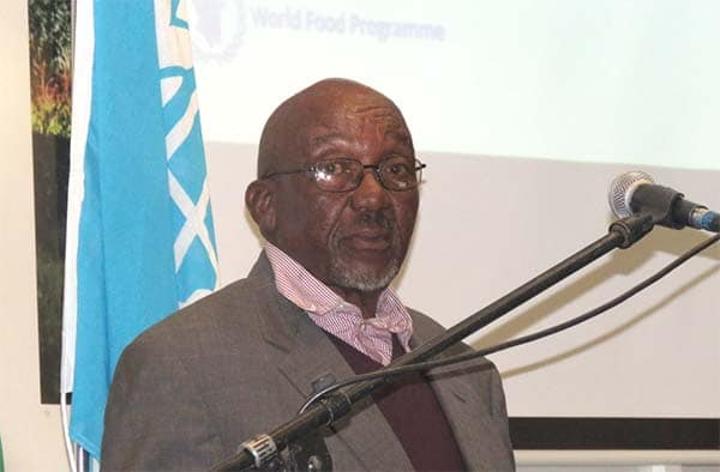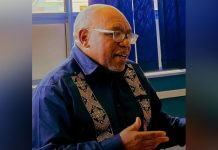Africa-Press – Lesotho. Lesotho’s poverty profile has not changed over the past decade with an estimated 57 percent of the country’s population still living below the poverty line, the World Food Programme (WFP) Lesotho said on Wednesday while presenting the draft of the new Lesotho Country Strategic Plan 2019-2024.
In rural areas 60 percent of the population lives below the poverty line while overall 30 percent of the country’s population, according to WFP, is actually below the food poverty line with food expenditure falling short of meeting minimum food requirements.
The organisation further revealed in their new five-year strategic plan that extreme poverty is concentrated among elderly people, with the highest rates of poverty among adults aged 60 to 64 years (38.8 percent) followed by children aged 14 years and adults aged 55 to 59 years.
One of the major reasons for the shocking statistics, according to the organization, has been poor performance in the agriculture sector. Major factors constraining agricultural growth include exposure to climate shocks such as droughts, floods and frost, land degradation, soil infertility, the high cost of production and lack of access to financial services and structured markets.
With the new strategic plan, WFP has underlined several measures that would go a long way towards reducing the shocking statistics and move towards achieving zero hunger in Lesotho by the year 2030.
A goal to achieve zero hunger by the year 2030 is one of the highly rated in the 2015 to 2030 Sustainable Development Goals (SDGs) Goal two of the SDGs is focused on ending hunger, achieving food security and improving nutrition as well as promoting sustainable agriculture.
However, for WFP to achieve this goal, the organisation will need around US$110 million (about M1.5 billion) to finance all its ideas. “The overall requirement for the next five years is around US$110 million.
Of this, we have to work together with our partners to make sure that we mobilise the money in order to inject it in all these economic projects,” said Tanki Sekalaka from the finance department at WFP.
Sekalaka further revealed that out of the US$110 million, the requirement in the first year is about US$22 million. “Out of that we have already managed to mobilise close to US$9 million that will help us kick-start operations, this is about 41 percent of the US$22 million,” he added.
WFP, according to Sekalaka, is also expecting to receive about US$10 million from the adaptation fund which will also help them to implement some of the activities listed in the first year.
Due to the fact that WFP is voluntary and donor funded, Sekalaka urged all other partners to joing hands in mobilising funds in order to reach the US$110 million mark for the next five years.
For the next five years, the organisation is expecting to have distributed food to the value of US$50 million in emergency response to the imminent food shortage in the country.
Another US$3 million will also be used to capacitate farmers, retailers and all other economic sectors in order to drive the economy together. According to the WFP Country Director, Mary Njoroge, the main focus for the next five years will be on pushing towards achieving the zero-hunger target by 2030.
This, she revealed, can only be achieved through corporation with government and other partners going forward. “When preparing this strategic plan for the past two or three years, we looked at what WFP globally wanted to do and our focus is on two goals of sustainable development goals.
“We are mainly focused on goal two which is towards achieving zero hunger by the year 2030 and goal 17 which is about partnerships and working together,” Njoroge said in her opening remarks on Wednesday this week, emphasising that government commitment plays a huge role towards achieving these goals.
“So in terms of zero hunger we know that there are issues that are related to development.
Right now we know that Lesotho is faced with drought and people are not able to feed themselves and therefore the mandate of WFP is first of all to look at what is it that we can do to ensure that where shock comes people are resilient enough to continue to feed themselves.
She said Lesotho has not made progress for a long time when it comes to ending poverty, citing therefore that there is a lot of work ahead if the country is to literally get out of hunger.
“We know that the number of people living below the poverty line is very high at 57 percent looking at the statistics.
In 2003 the baseline for the Millennium Development Goals was 66.6 percent and the target was that by 2015 when the MDGs are coming to an end the country should have reduced extreme hunger and poverty by 29 percent. However, right now the number of people who are really below poverty line is around 57 percent.
“So, you can see that since 2003 we moved from 67 percent to where we are now in 2019 at 57 percent and if you calculate the number of years from 2003 to 2919, you will see that we have not made progress,” she noted.
The new Lesotho Country Strategic Plan, which is set to contribute massively in the country for the next five years, will be implemented in June this year. WFP, government and other partners are yet to present the draft before the organisation’s executive board in Rome in the same month.






